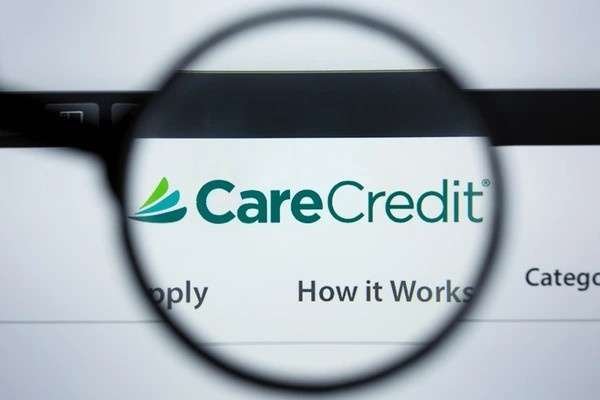When it comes to financing healthcare, dental, and wellness services, two popular options that often come up are Cherry Financing and CareCredit. Both platforms offer flexible payment plans, but they differ in their structure, application process, approval rates, and specific services they cover. If you’re trying to decide between Cherry Financing and CareCredit for your healthcare or other financing needs, this guide will help you understand their differences and similarities to make an informed choice.
Table of Contents
What is Cherry Financing?
Cherry Financing is a digital lending platform that provides patients with financing options for medical procedures, dental treatments, and other personal services. Cherry works with healthcare providers and allows them to offer customized payment plans to patients. It focuses on giving patients access to medical and wellness services with affordable installment options.
Key Features of Cherry Financing
- Flexible Payment Plans: Cherry offers customized payment plans that can be adjusted to your financial situation.
- Quick Approval Process: Cherry typically offers fast approval, sometimes within minutes, depending on the provider’s system.
- Soft Credit Check: Cherry performs a soft credit check, which won’t negatively impact your credit score.
- No Hidden Fees: There are no hidden fees associated with Cherry financing plans, which helps in offering clear and predictable monthly payments.
What is CareCredit?
CareCredit is a healthcare credit card issued by Synchrony Bank, specifically designed to help patients pay for healthcare expenses not covered by insurance. It is widely accepted at over 200,000 healthcare providers, including dentists, veterinarians, and vision specialists. CareCredit offers both short-term and long-term financing options depending on the medical procedure and provider.
Key Features of CareCredit
- Wide Acceptance: Accepted by over 200,000 healthcare providers across various industries.
- Variety of Financing Options: CareCredit offers both promotional financing plans (such as 0% APR for a specified period) and extended financing with interest.
- No Annual Fees: There are no annual fees associated with the CareCredit card, which can make it appealing for frequent users.
- Credit Limit: CareCredit offers a revolving line of credit, which means that once you repay your balance, the credit is available again for future use.
Cherry Financing vs. CareCredit: A Comparison
To help you choose between Cherry Financing and CareCredit, let’s break down the key features, pros, and cons of both platforms in a comprehensive comparison table.
| Feature | Cherry Financing | CareCredit |
|---|---|---|
| Type of Financing | Personal loan for healthcare and wellness | Healthcare credit card for medical expenses |
| Approval Process | Fast approval, often within minutes | Fast approval, subject to credit score |
| Application Process | Online application, soft credit check | Online or in-person, soft or hard credit check |
| Credit Score Impact | Soft credit check (won’t affect your score) | Hard credit check (may impact your score) |
| Interest Rates | Competitive rates, depending on credit | 0% promotional financing for 6, 12, or 18 months, or regular APR (variable) |
| Repayment Terms | Flexible, based on plan selected | Short-term (0% APR for promotional periods), long-term with interest |
| Fees | No hidden fees, transparency in payments | No annual fee, late payment fees apply |
| Usage | Medical, dental, wellness services | Medical, dental, vision, veterinary, and more |
| Credit Limits | Based on approval and provider policies | Based on approval, revolving credit limit |
| Promotions | Typically no specific promotions, but flexible terms | 0% APR promotional periods for specific timeframes |
Advantages of Cherry Financing
- Flexibility in Payment Plans: Cherry Financing allows for more flexibility in the payment plans, often tailored to the patient’s financial situation.
- Quick and Simple Application: The online application process is straightforward, with quick approval times, sometimes even within minutes.
- Soft Credit Check: Cherry uses a soft credit check, which won’t affect your credit score, making it more attractive for those concerned about their credit standing.
- No Hidden Fees: Cherry provides transparent information about all fees, ensuring that there are no surprises for the borrower.
Drawbacks of Cherry Financing
- Limited Provider Network: While Cherry is expanding, it may not be accepted by as many healthcare providers as CareCredit.
- Shorter Terms for Larger Expenses: Cherry’s financing plans may have shorter terms compared to CareCredit, which could be a limitation for high-cost procedures.
Advantages of CareCredit
- Wider Acceptance: CareCredit is accepted at over 200,000 healthcare providers, giving it a broader reach than Cherry Financing.
- Promotional Financing: CareCredit offers 0% APR promotional financing for shorter periods, making it ideal for smaller medical expenses that can be paid off quickly.
- Revolving Credit Line: With CareCredit, you have access to a revolving line of credit, allowing you to use it multiple times for different medical expenses.
- No Annual Fees: There are no annual fees with CareCredit, which makes it cost-effective for those who frequently need medical financing.
Drawbacks of CareCredit
- Hard Credit Check: CareCredit conducts a hard credit check, which can affect your credit score and may limit approval for individuals with lower credit scores.
- Higher Interest Rates After Promotional Periods: If the balance is not paid off within the promotional period, CareCredit charges interest on the remaining balance, which can be high.
- Late Payment Fees: CareCredit has late payment fees, which can be costly if payments are not made on time.
Which One Should You Choose?
Choosing between Cherry Financing and CareCredit ultimately depends on your specific needs and preferences. Here are some factors to consider when making your decision:
Choose Cherry Financing if:
- You are looking for flexible payment terms with a soft credit check.
- You prefer a quick and easy online application process.
- You want transparent fees with no hidden charges.
- Your provider is partnered with Cherry Financing, and you want customized loan options based on your financial situation.
Choose CareCredit if:
- You want access to a wider range of healthcare providers, including those in dental, veterinary, and vision care.
- You are interested in 0% APR promotional financing for smaller medical expenses.
- You prefer using a revolving line of credit for medical purchases and want the ability to reuse the credit.
- You have a good credit score and can benefit from promotional financing without worrying about high interest rates.
Final Thoughts
Both Cherry Financing and CareCredit offer unique benefits tailored to different types of healthcare financing needs. Cherry Financing is ideal for those who want a flexible, quick, and low-risk option with a soft credit check, while CareCredit stands out for its widespread provider network and ability to use a revolving line of credit for medical expenses.
Before making a decision, it’s important to carefully consider your financial situation, the type of medical procedure you need financing for, and whether you prefer the flexibility of a loan or the revolving credit line offered by CareCredit.





